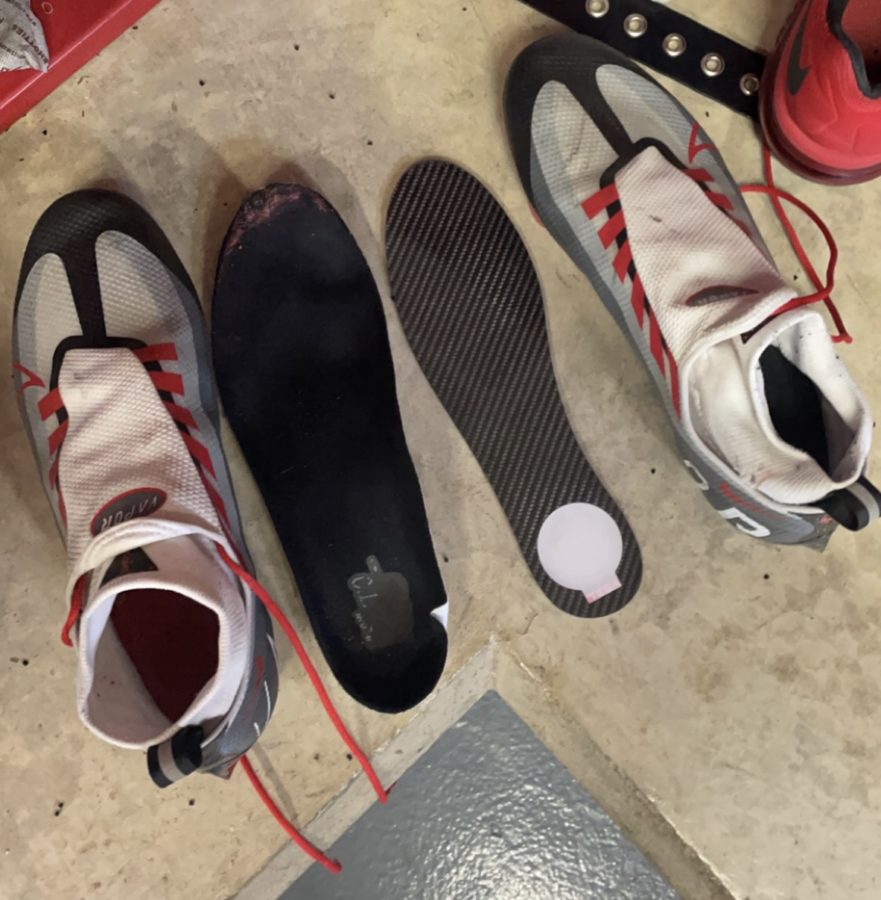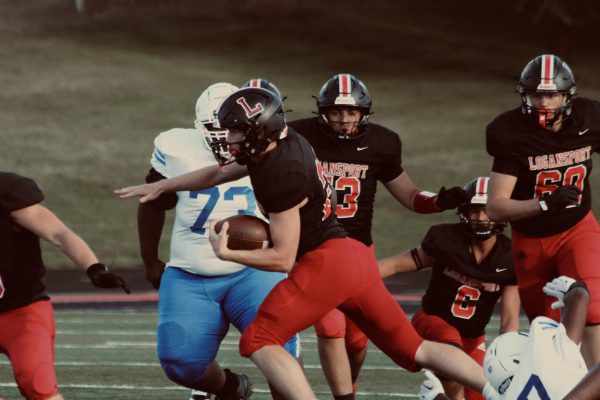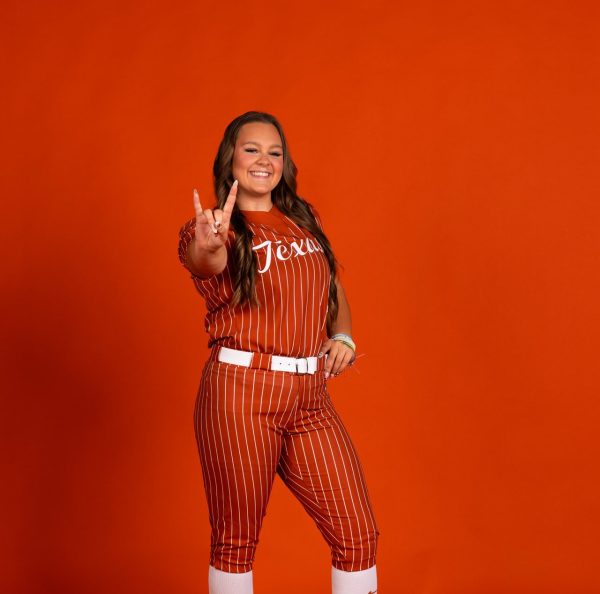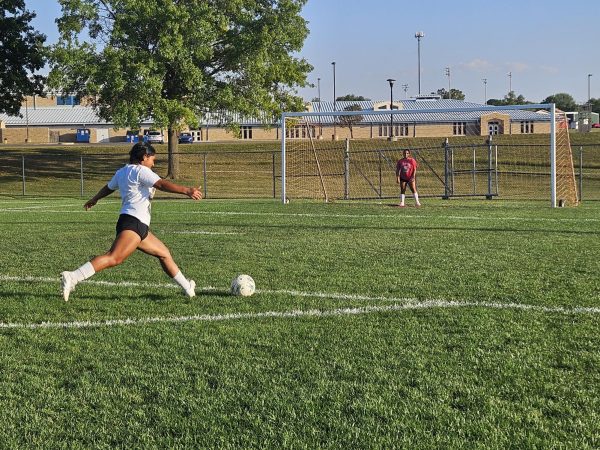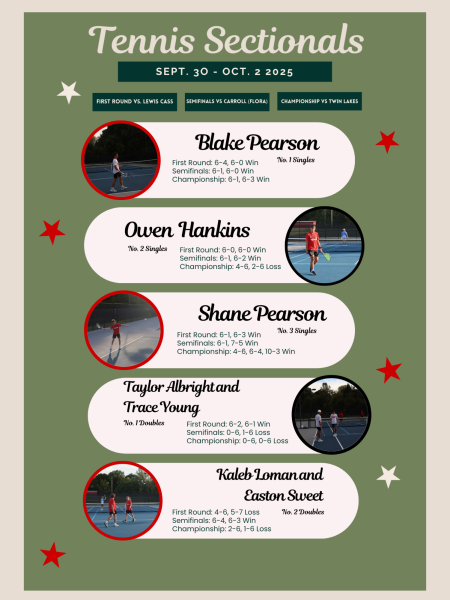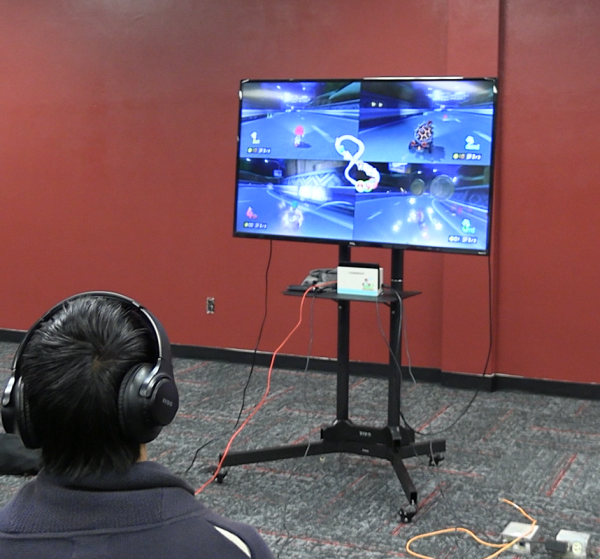For Athletes, Choosing the Correct Shoe is Paramount
Here are Nike Men’s Vapor Edge Pro 360 football cleats with insoles that go inside of them to help with senior Jeremiah Miller’s foot injury.
Twenty-five percent of athletic injuries are related to the foot and ankle according to a study from the American Academy of Orthopaedic Surgeons. Almost all sports depend on athletes’ using their feet to cut, run, jump, and react quickly.
The way cleats and sneakers are made causes common foot injuries when athletes make simple motions. Straightforward movements such as landing, cutting, and lateral rotation can easily turn into a foot injury.
“I have sprained my ankle roughly three times compared to only about once with the left,” senior Diego Pasley said. “In my first year of wrestling, I had my first ankle sprain. We were in the middle of warm-ups doing karaoke, and I believe I injured it because I simply just landed on it wrong, causing it to twist. Due to the discomfort, I believed I had broken it. Instead, it came out to be quite purple.”
Some cleats or sneakers are picked out by athletes, not because of the comfort or stabilization of the footwear, but the style and how “drippy” they look.
“I choose my cleats and sneakers based on the sport I’m participating in,” senior Aaron Bau said. “My shoes must match the team uniform in terms of color, specifically. I didn’t try them on because they looked so good; I just ordered them online. However, the first time I wore them, I noticed there wasn’t much cushioning on the top of the foot.”
Some other athletes’ may pick out their footwear based on safety from previous injuries. Athletes also may choose their cleats or sneakers based on their position in their sport.
“When it comes to football, I pay my attention to high tops,” Pasley said. “Since I am a lineman, I wear an ankle brace, but I need the extra support. If a cleat is a low top, I throw it out the window because to me, there is no ankle support there like the high tops.”
The arch support of a cleat or sneaker could be used for certain types of sports to help reduce the amount of pain an athlete may get from a foot injury, which can allow an athlete to continue to play.
“I have experienced one of my teammates on the football team having to deal with a mid-foot sprain in his foot all season long,” senior Tristan Kitchel said. “His injury is hard to play through because every time he pushes off and gets on his toes to make a move, he gets a sharp pain. He ended up buying these specific types of insoles to put in his cleats and help with the arch support.”
It comes to the conclusion that cleats and sneakers should be made and evaluated a little more carefully to decrease foot injuries. Not all injuries are avoidable, but this can be handled more appropriately.
“I believe cleats and sneakers contribute to an athlete’s foot becoming injured,” Pasley said. “The negative is that they offer little to no ankle support due to the way cleats and shoes are designed with lightweight materials, which makes the athlete faster, which is of no assistance to larger athletes. I understand that everyone wants to look good and play to the best of their capabilities, but what if one simple injury that can be more preventable stops you from playing.”
Your donation will support the student journalists of Logansport High School. Your contribution will allow us to purchase equipment and cover our annual website hosting costs.

Senior Jeremiah Miller is a new member of the Logansport High School Magpie. On the staff, he mainly covers sports/opinion articles. One thing he loves...

